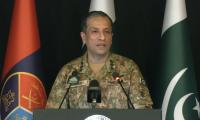The dozens of recently released videos that show deadly stampedes outside food distribution centres are a clear indication of hunger and food insecurity in the country.
That these cases occur in the holy month of Ramazan – known as the month of charity – is shocking. But it also highlights the desperate state of people struggling with a severe economic crisis. This indicates that access to food as a basic right has become extremely risky.
Different charity organizations interviewed by ‘Reuters’ have expressed how difficult it is getting for them to help the impoverished as charitable donations are decreasing and the number of needy people keeps growing. It has been reported that people who used to donate large amounts for charity have reduced their share while those who previously contributed smaller amounts are now seeking financial assistance.
The report finds that there has been a 50 per cent decline in the amount of donations received this year while individuals seeking assistance has also increased by 50 per cent. The situation is expected to intensify in the coming months given the economic and political turmoil the country is going through.
Food security encompasses various aspects from availability and adequate access to proper utilization of nutritious food and stability. These dimensions are interconnected and complex in nature to achieve food security. At present, the country’s food security is being threatened on all fronts.
In terms of availability, unabated climate events and extreme weather conditions significantly affect the country’s agricultural output. Official estimates suggest that 80 per cent of the country’s crop were damaged in flash floods that hit Pakistan in 2022. It goes without saying that extreme weather conditions including excessive floods, heatwaves, droughts, and the outbreak of pandemics are the new normal of the 21st century, which have huge repercussions particularly for an agro-economy like Pakistan. In addition to this, economic uncertainty and receding foreign exchange reserves with the threats of default are likely to lead to supply chain disruptions, particularly for imported food items and medicines. Not only does food insecurity refer to food shortages, it also affects people’s ability to afford adequate nutritious food. This aspect is equally essential to address the persistent issue of hunger and undernutrition in the country. High levels of inflation are significantly affecting the purchasing power of consumers especially for low-income households who spend almost 50 per cent of the total expenditure on food.
Inflation rose to a record 35 per cent in the month of March, reaching an all-time high in its 75-year history. Food inflation for the same month soared to 47.1 per cent and 50.2 per cent for urban and rural areas respectively. While low-income households are the most vulnerable to food insecurity, the current runaway prices are taking a toll on the economic wellbeing of all segments of society. Thus, increasing the number of food-insecure households.
The World Food Programmes (WFP) has used the Integrated Food Security Phase Classification (IPC) to assess the food security situation in Pakistan. It is projected that by early 2023, around 1.1 million people will experience a transition from the ‘crisis’ phase (severe food insecurity with limited access to food, water and other basic needs) to the ‘emergency’ phase (even more dire situation with people facing extreme hunger and starvation) due to a worsening food security situation.
Evaluating Pakistan’s food situation, as grim as it may be, will be incomplete without taking into account nutrition security, which goes beyond just measuring food security in terms of calories. Access to calorically rich food alone does not ensure the intake of required nutrition as that food may not be nutritious enough.
Pakistan remains to be one of the most undernourished countries in the world given its aggregate income levels and rates of poverty. While monetary poverty rates in the country declined considerably since 2000, this has not contributed to a better nutrition status of individuals.
According to the National Nutrition Survey 2018, four in 10 children under the age of five are reported to be stunted. This constitutes 40 per cent of the total children in the country, and places Pakistan among top ten countries in the world with the highest stunting rate. Official estimates on multidimensional poverty in 2015 also outstripped the monetary poverty levels of the country – almost 38 per cent of the population was deprived of good education, access to healthcare facilities and a decent living standard. Given health and nutritional challenges, the country’s efforts to reduce malnutrition are trivial and its performance is ranked as the second worst in the region – only ahead of Afghanistan.
Literature suggests that the link between monetary poverty and malnutrition is a vicious cycle process that continues to reinforce each other. Monetary poverty affects access to sufficient nutritious food and deprives individuals of the necessary capabilities to function effectively. Malnourishment impacts the physical and mental growth of children, thereby hindering their potential to contribute to economic growth and development. This ultimately pushes individuals to stay in the poverty trap.
Since the country is going through its worst economic crisis with no end in sight, it is not difficult to foresee the unbearable consequences on the people of the country, who are likely to suffer from acute hunger and malnutrition. It is crucial for the government to take a comprehensive approach to address the challenges posed by depreciating rupee, price volatility, low purchasing power and climate-related disasters.
By focusing on supply chain management, promoting investment and job creation, social safety programmes and disaster risk reduction measures, the government can help ensure that everyone has access to the basic goods and services.
The writer is a research fellow at the Lahore School of Economics. She can be reached at: samqk11@gmail.com
People of that time believed that an eclipse was a symbol of displeasure of gods
Debt-to-GDP ratio, which stood at 51% in 2009-10, peaked at 74% in 2019-20 and remains alarmingly high at 65% in 2023-24
Point is not to pour cold water over government’s achievements, but to look at baseline metrics
Loss of biodiversity is stark reminder that urban mismanagement is not just infrastructural failure but ecological...
Strong public warning systems can also help ensure quick evacuations in places prone to fires
PPPs in Pakistan's WASH sector face significant regulatory and policy challenges that hinder their effectiveness







